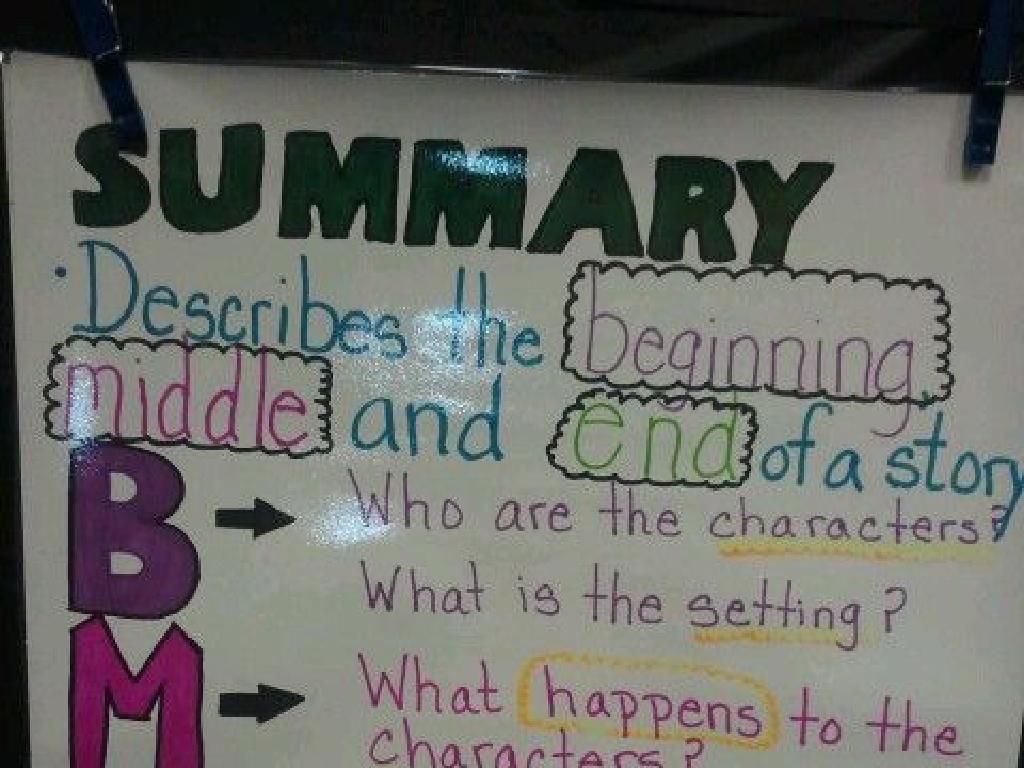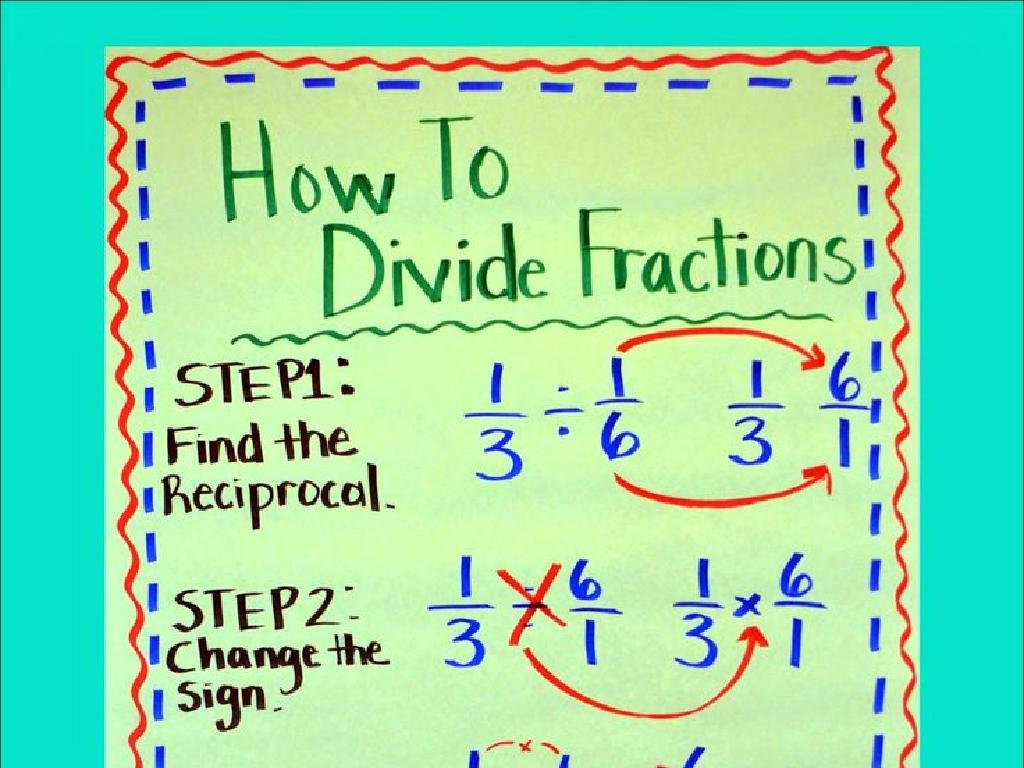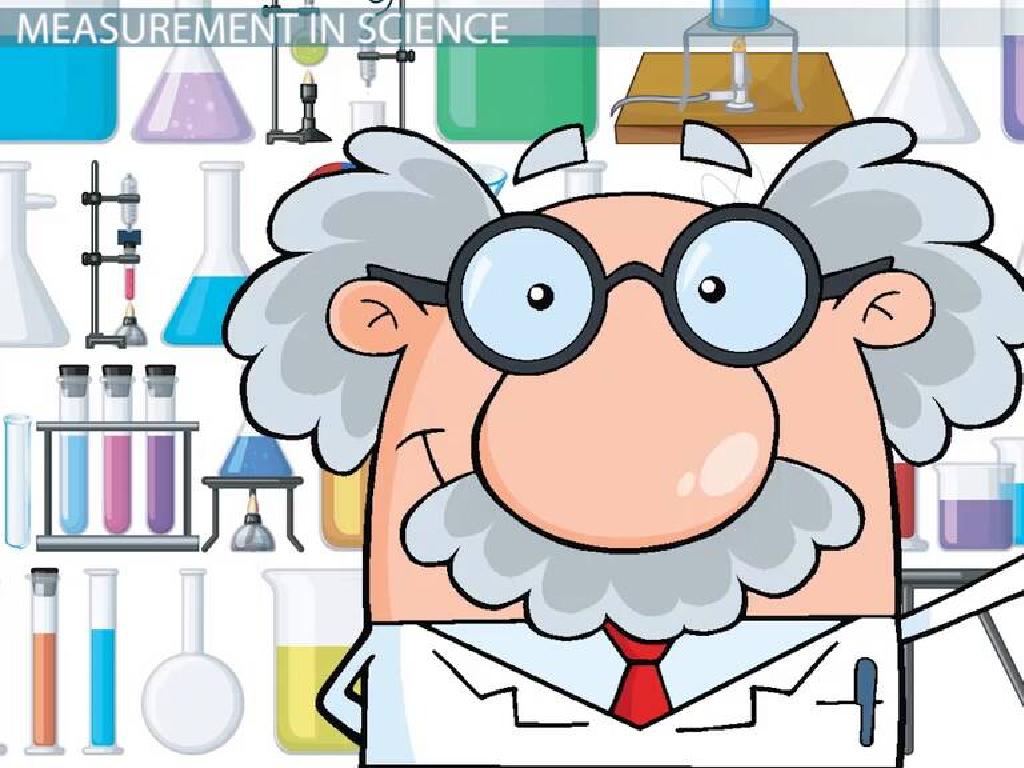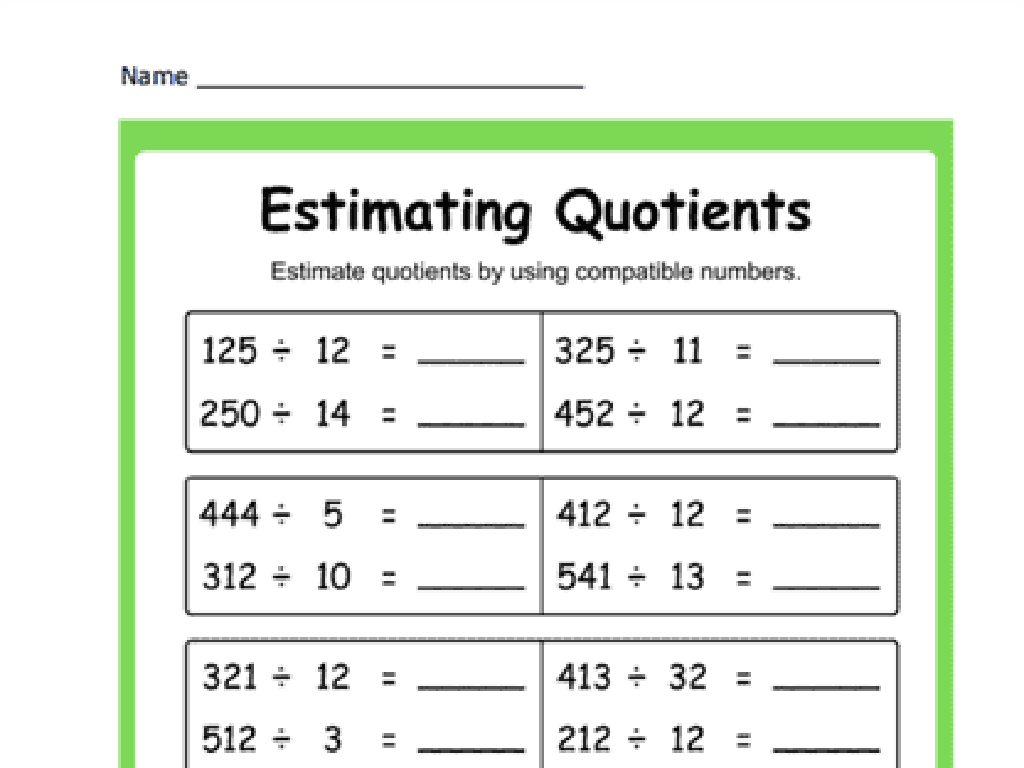Identify Roles In Food Chains
Subject: Science
Grade: Fourth grade
Topic: Ecosystems
Please LOG IN to download the presentation. Access is available to registered users only.
View More Content
Exploring Food Chains in Ecosystems
– What is an ecosystem?
An ecosystem includes all living things in an area.
– Components of ecosystems
Plants, animals, and the environment work together.
– Introduction to food chains
Food chains show who eats whom in nature.
– Roles within a food chain
Producers, consumers, and decomposers have specific roles.
|
Begin the lesson by explaining what an ecosystem is, emphasizing that it’s a community of living organisms in conjunction with the nonliving components of their environment, interacting as a system. Introduce the components of ecosystems, including plants, animals, water, soil, and air, and how they all work together to form a balanced system. Then, transition to food chains, explaining that they are a simple way to show how energy and nutrients pass from one organism to another. Highlight the roles within a food chain: producers (like plants), consumers (animals that eat plants or other animals), and decomposers (organisms that break down dead material). Use examples relevant to the students’ local environment to illustrate these concepts. Encourage students to think of their own examples of food chains that they may have observed in their surroundings.
Exploring Food Chains
– What is a Food Chain?
– A sequence showing who eats whom in the wild
– Energy flow in nature
– Sun provides energy to plants, which is passed on when animals eat plants or other animals
– Food chain examples
– Grass Rabbit Fox
– Importance of each role
– Every part of the chain is crucial for the ecosystem’s balance
|
This slide introduces the concept of food chains to fourth-grade students. Begin with a simple definition of a food chain, emphasizing it as a sequence that displays the feeding relationships between organisms. Explain how energy originates from the sun and is transferred through the chain as animals eat plants or other animals. Provide clear examples of food chains, using organisms that are familiar to the students. Highlight the importance of each link in the chain and how it contributes to the overall balance of the ecosystem. Encourage students to think of other examples and consider what happens if one part of the chain is removed.
Producers: The Energy Starters in Food Chains
– What are Producers?
– Organisms that make their own food, like plants.
– Sunlight’s role in food chains
– Sunlight is the primary energy source for all food chains.
– Photosynthesis process
– Plants convert sunlight into energy via photosynthesis.
– Producers as energy sources
– They start the energy flow in food chains.
|
This slide introduces the concept of producers in food chains, which are typically plants or algae that create their own food through photosynthesis. It’s crucial to explain that producers are the foundation of any food chain because they convert sunlight into usable energy, which is then passed on to consumers. Emphasize the importance of sunlight as the original energy source for all ecosystems. Use diagrams to illustrate the photosynthesis process, and provide examples of producers like grass, trees, and algae. Encourage students to think of producers as nature’s solar panels, capturing sunlight and creating the energy that supports the rest of the food chain.
Consumers: The Energy Takers in Food Chains
– Types of Consumers: Herbivores, Carnivores, Omnivores
– Herbivores eat plants, Carnivores eat meat, Omnivores eat both
– Consumers rely on Producers
– Producers like plants make their own food, Consumers eat them for energy
– Understanding Predator-Prey Relationships
– Predators hunt prey, like lions hunt zebras
– The balance of Ecosystems
|
This slide introduces students to the concept of consumers within food chains, focusing on their roles as energy takers. It’s important to explain that consumers are organisms that cannot make their own food and must eat other organisms to get energy. Highlight the three types of consumers: herbivores (plant-eaters), carnivores (meat-eaters), and omnivores (both plant and meat-eaters). Discuss how consumers depend on producers, such as plants, for their energy, and introduce the concept of predator-prey relationships, using examples familiar to the students, like how a lion (predator) hunts a zebra (prey). Emphasize the importance of each role in maintaining the balance of ecosystems. Activities can include matching games with consumers and their food sources or creating simple food chains with drawings.
Decomposers: Nature’s Recyclers
– Who are decomposers?
– Organisms that break down dead material
– Decomposers in food chains
– They recycle nutrients back into the ecosystem
– Decomposition process
– Turning dead matter into soil nutrients
– Waste into resources
– Helps in soil formation and nutrient cycling
|
Decomposers play a crucial role in maintaining the balance of ecosystems by breaking down dead and decaying organisms, and in doing so, they recycle nutrients that are essential for the growth of plants. These organisms include bacteria, fungi, and certain insects. During the decomposition process, complex organic materials are converted into simpler compounds, which are then used by plants to grow. This slide will help students understand the importance of decomposers in food chains and how they contribute to turning waste into valuable resources for other organisms. Encourage students to think of examples of decomposers they might find in their local environment, such as mushrooms growing on a fallen log or worms in the soil.
Interconnected Food Chains: Food Webs
– From chains to complex webs
– Food chains link together to form food webs, showing how all creatures are connected.
– Interconnections in ecosystems
– Each species may be part of multiple food chains, illustrating their role in the ecosystem.
– Balance is key in food webs
– A stable food web ensures survival of different species; imbalance can lead to extinction.
– Impact of changes in the web
– Removing or adding species can disrupt the web, affecting the whole ecosystem.
|
This slide introduces the concept of food webs, an expansion of the simpler idea of food chains. Students should understand that a food web is a more accurate representation of natural feeding relationships, as it shows the complex network of interactions between different organisms in an ecosystem. Emphasize the importance of each species in maintaining the balance of the ecosystem, and discuss how changes, such as the removal of a key species, can have wide-reaching effects. Activities can include creating a food web diagram or discussing the impact of local species on their food web.
Human Impact on Food Chains
– Humans influence food chains
– Overfishing & deforestation effects
– Overfishing reduces fish populations, deforestation destroys habitats.
– Consequences on ecosystems
– Imbalance in food chains can lead to loss of species and biodiversity.
– Preserving natural food chains
– Sustainable practices and conservation can protect food chain balance.
|
This slide aims to educate fourth-grade students on the significant impact humans have on food chains through activities like overfishing and deforestation. It’s crucial to discuss the ripple effects these actions have on ecosystems, such as species depletion and biodiversity loss. Emphasize the importance of our role in preserving these natural systems. Encourage students to think about how every action we take can either harm or help the delicate balance of food chains. Discuss examples of sustainable practices, like responsible fishing and forest conservation, to illustrate how we can contribute positively to the environment.
Class Activity: Create Your Food Chain
– Let’s build a food chain together!
– Choose organisms for your chain
– Pick a producer, a consumer, and a predator
– Draw and label each organism’s role
– Show who eats whom in your food chain
– Present your food chain to the class
|
This interactive activity is designed to help students understand the concept of food chains within ecosystems. Each student will select different organisms and arrange them to form a food chain, starting with a producer (like a plant), followed by consumers (such as insects or herbivores), and ending with a predator (like a carnivore). They should draw and label each organism, indicating its role in the food chain. Encourage creativity and ensure they understand the flow of energy from one organism to the next. After completion, students will present their food chains to the class, explaining the relationship between the organisms. Possible variations of the activity could include creating a food web with multiple interconnected food chains, or a hands-on activity with cut-out pictures of organisms that students can arrange on a poster.






